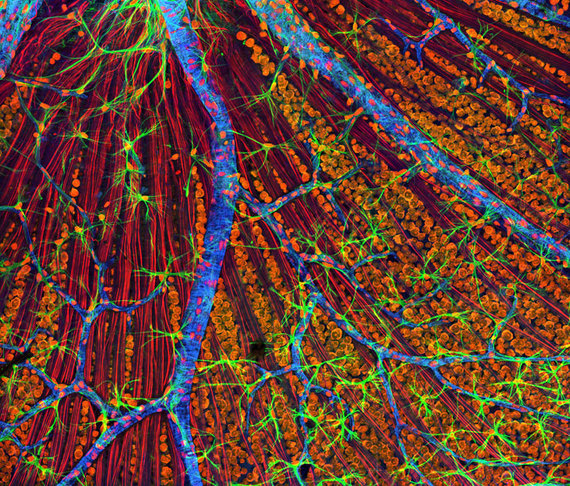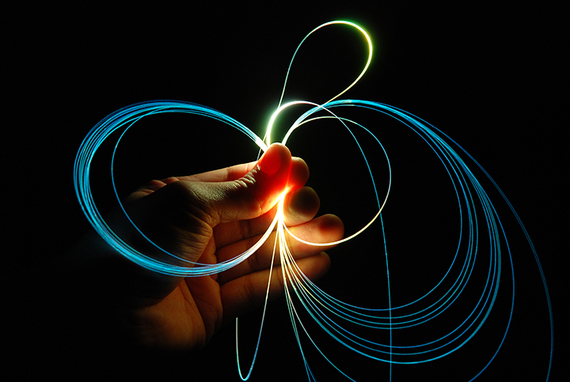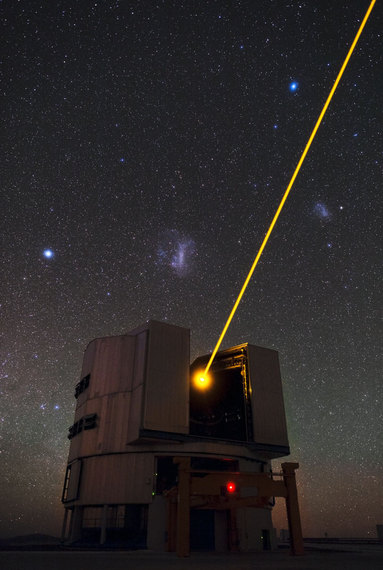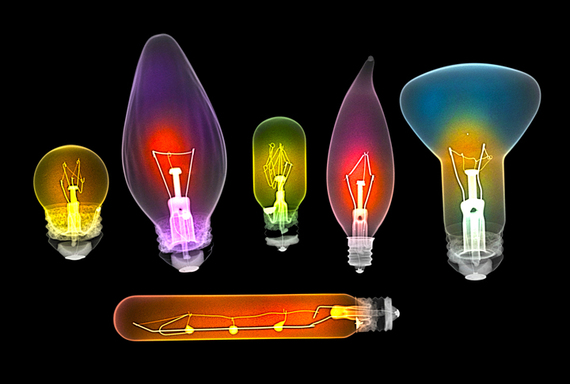
Caption: In this piece of art, light bulbs were placed in a medical X-ray machine. The artist then added color to the individual light bulbs to create the desired effect. Credit: Dr. Paula Fontaine/www.RadiantArtStudios.com
Light is one of those things that we almost inevitably take for granted. In fact, many of us might not realize the extent that we overlook its contributions to our lives, because it's hard to see - literally -- just how much it does.
The light that humans can detect with their eyes is but a mere fraction of the total light out there. Light takes many forms, including radio waves, microwaves, infrared, ultraviolet, X-rays and gamma rays.

Caption: The electromagnetic spectrum includes wavelengths and energies from radio to gamma rays. Illustration: NASA/CXC/M.Weiss
We rely on light -- both natural and sources made by humans -- to brighten our world. In the form of radio waves and microwaves, light is also used for communication and navigation through cellphones and GPS. Medical tools that use light, including the highest-energy light of X-rays and gamma rays, help us monitor our bodies and attack certain diseases such as cancer.

Caption: We use light for many purposes including some basic ones such as illuminating our way. This image combines eight different photos, each with exposures of 30 seconds, which show car headlights along a highway. In the future, reflected lasers may power more of our headlights, providing a more powerful and energy-efficient (yet still safe) beam that lights our way through the night.
Scientists use instruments on the ground and in space that detect different types of light like infrared to monitor our climate and forecast our weather. Astronomers capture light in all types from the cosmos to understand distant galaxies, to look for signs of life beyond Earth, and to learn more about our own planet.
Caption: Images taken from satellites in space in different types of light help us better predict weather and understand the science that drives it. Credit: NASA/JSC/Mike Trenchard
In addition to its pivotal role in various industrial processes, light may very well represent our future for powering the planet. After all, the sunlight contains enormous amounts of energy that, if we could efficiently capture it, it could provide sustainable power for billions of people.

Caption: Solar panels allow us to harness some of the vast energy that is provided to us every day from the Sun. Credit: Dennis Schroeder/NREL
For these and many other reasons, the United Nations has declared 2015 to be the "International Year of Light." We've put together a collection of spectacular images in an online exhibit called "Light: Beyond the Bulb" to help celebrate light and all of the amazing things it can do. Here is a sampling of facts about the wonders of light:
- Light comes in different forms. The light that we see with our eyes is just a fraction of all light. Light encompasses wavelengths ranging from radio waves to gamma rays in what is called the "electromagnetic spectrum."
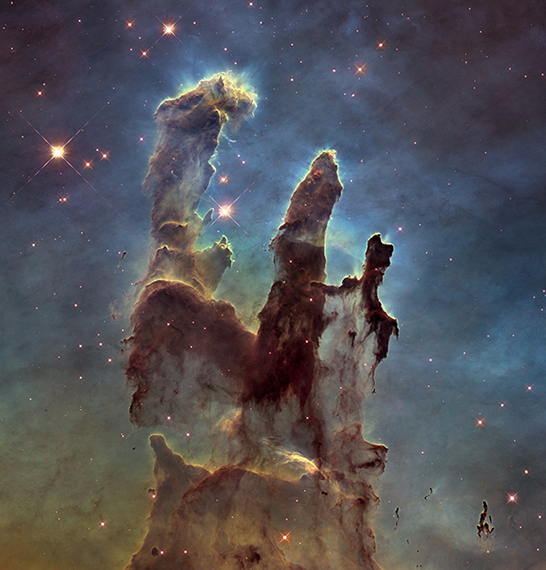
Caption: This object, officially titled Messier 16, is nicknamed the "Pillars of Creation." This spectacular image from the Hubble Space Telescope captures this region of space where baby stars are forming in ultraviolet and visible light. Credit: NASA, ESA, Hubble Heritage Team (STScI/AURA)
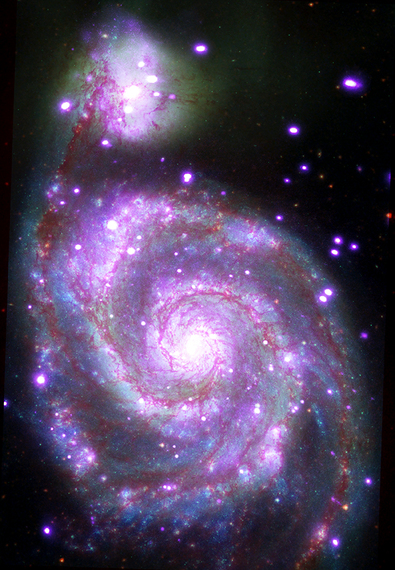
Caption: By combining light from several NASA different telescopes that detect X-ray, infrared, visible, and ultraviolet light, this image reveals information about the galaxy this galaxy could never be gleaned from just one band of light. Credit: X-ray: NASA/CXC/SAO; UV: NASA/JPL-Caltech; Optical: NASA/STScI; IR: NASA/JPL-Caltech
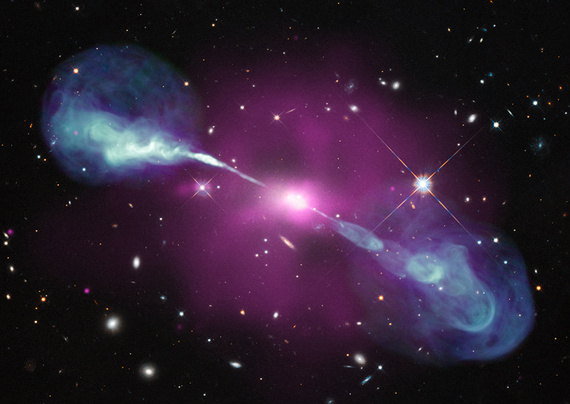
Caption: Matter being pulled toward a giant black hole usually doesn't glow in the light we can see with our eyes - rather it is revealed through light as radio waves and X-rays. This image captures the Hercules A galaxy that has an enormous jet blasting away from its black hole.
Credit: X-ray: NASA/CXC/SAO, Optical: NASA/STScI, Radio: NSF/NRAO/VLA
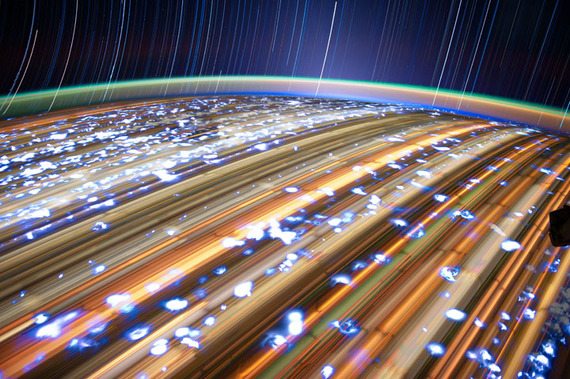
Caption: While moving at 17,000 miles per hour at an altitude of 240 miles above the Earth's surface on the International Space Station, NASA astronaut Don Petit was able to capture the lights from our planet in a unique way. His time-lapse photographs--taken from this unusual vantage point--feature star trails, terrestrial lights, and auroras. Credit: NASA/JSC
Caption: This rainbow is caused by light being refracted (bent) when entering a droplet of water, then reflected inside on the back of the droplet and refracted again when leaving it. This causes the combined colors of sunlight to spread out into the familiar red, orange, yellow, green, blue, indigo, and violet of a rainbow. Credit: Lisa & Jeffrey Smith
Caption: Shadows are a familiar experience for most of us. Any time an object blocks the light from another source, it can form a shadow. In this photograph, we see shadows on the spectacular walls of Antelope Canyon in Arizona as sunlight streams through an opening above. Credit: J L Spaulding, creative commons license
Caption: Reflection consists of two rays: an incoming or 'incident' ray and an outgoing or 'reflected' ray. All reflected light obeys the rule that says the incident ray strikes a surface at the same angle that the reflected ray bounces away from it. In the case of a smooth surface like a mirror or the calm top of a lake, a clear identical image is produced. Credit: Prabhu B Doss
Caption: The image shown here is from a laser-scanning microscope of a mouse retina, where the cells have been stained with fluorescent dye to show different features. By studying the microscopic structure of both diseased and normal retina and optic nerves through this light-based technique, scientists hope to better understand the biology of these tissues and the prospects of developing therapeutic interventions. Credit: National Institute of General Medical Sciences (NIGMS)
Caption: Because of their capacity to carry massive amounts of data in the form of light, optical fibers serve as the backbone of the Internet. Almost every video and photo you download and nearly every email and text you send travels over optical fiber, sometimes across the world. The ability to transport confined light inside bent fibers means that they can also be used in endoscopes for imaging the interiors of both people and machines. Credit: Optoelectronics Research Centre, Southampton, UK
Kimberly Arcand and Megan Watzke are co-authors of "Your Ticket to the Universe: A Guide to Exploring the Cosmos" published by Smithsonian Books. The images in this article come from Light: Beyond the Bulb, an open-source international exhibition program for the United Nation's International Year of Light 2015 to showcase the incredible variety of light-based science being researched today across the electro-magnetic spectrum, across scientific disciplines, and across technological platforms.





